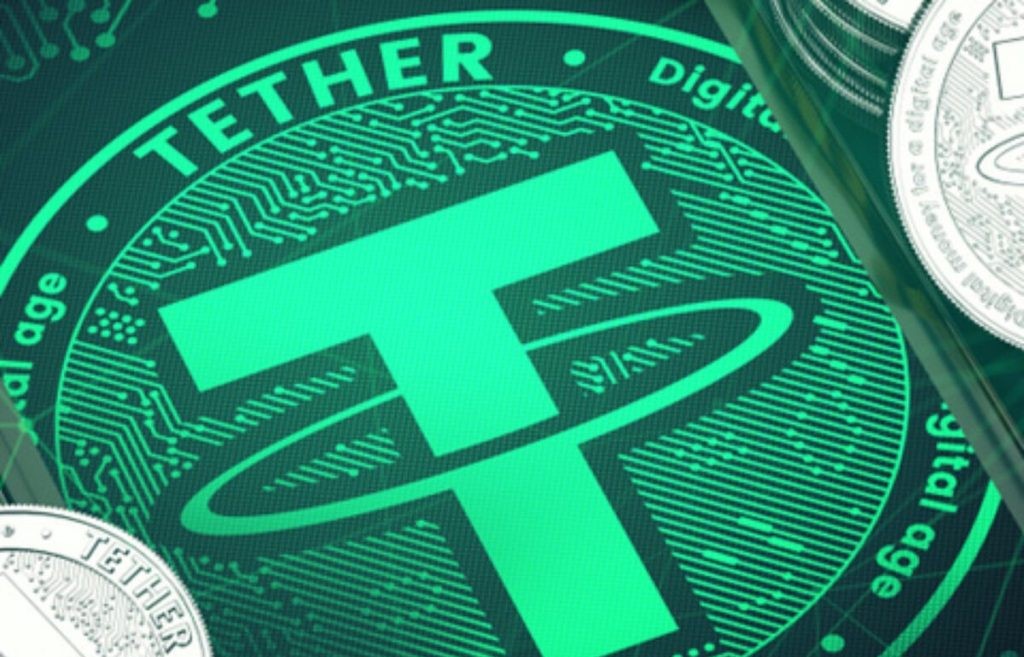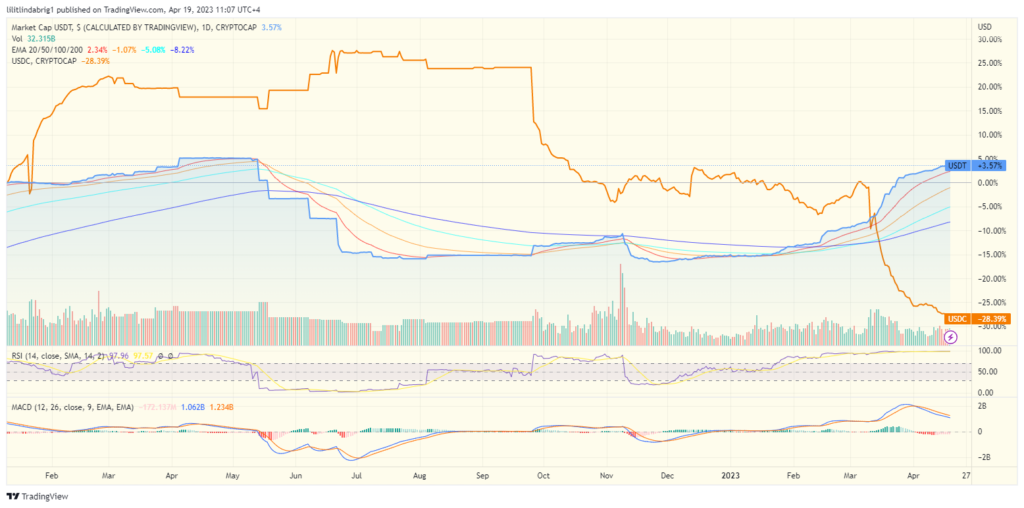
Key Takeaways:
- Tether market cap near a record high.
- Heightened Tron issuance might be a contributing factor.
- Other large stablecoins had a troubled Q1, triggering USDT use.
YEREVAN (CoinChapter.com) – Largest stablecoin and third largest digital asset Tether (USDT), grew 21% year-to-date and reached a market cap north of $81 billion on April 19, falling merely 2% short of the record-high $82.4 billion in May 2022. So why is the stablecoin growing? Let’s dive.

Tether usage on the rise
Crypto investors generally regard stablecoins as a mediator between cryptocurrencies and the fiat economy. Thus, they are often used to avoid the turbulence associated with digital assets while staying in the sector.
According to crypto tracker CoinMarketCap, the number of USDT holders rose to 4.3 million on April 19, albeit accompanied by a rise in centralization – the top 100 addresses hold over 37% of the USDT supply.

Tron in Tether dominance
Markus Thielen, head of research and strategy at crypto services provider Matrixport, believes the rise in Tether market cap could be attributed to “aggressive minting and issuance” on Tron.
DeFi tracking platform DeFiLlama backs the outlook and shows Tron-issued Tether at a 51.9% dominance. Notably, Ethereum-issued Tether stood at 39.7%.

Moreover, the USDT transfers on Tron saw an 18% uptick in the previous 24 hours and stood near $3 million on April 19.

Competitors had a rough Q1
The third-largest USDT batch is on Binance Smart Chain (3.9%), which has an obvious conflict of interest, as it generally relies on its infamous stablecoin Binance USD (BUSD), issued by Paxos.
However, as the Securities and Exchange Commission (SEC) filed a lawsuit against Paxos, BUSD ate the cost, with billions in outflows. Binance then developed an alternative stablecoin – True USD (TUSD), now the fifth largest stablecoin by market cap.

Moreover, the second-largest stablecoin, USDC, suffered a de-pegging incident, threatening lasting consequences and shaking investors’ trust. As a result, the stablecoin lost altitude parallel to Tether’s surge, confirming its erratic inverse correlation with USDT. While the latter rallied 21% since January 1, USDC lost 30% of its market cap.

Matrixport researcher also noted that some USDC holders likely diversified into Tether and Bitcoin. In a note to investors, Thielen wrote:
When news about unlimited support for bank deposits made the rounds, bitcoin prices exploded […] within a matter of days. But it would appear that holders of USDC either converted their Circle stablecoin into Tether’s USDT or that they simply sold $10 billion of USDC and bought bitcoin instead.
said the researcher.
Also read: What happens to crypto if Tether (USDT) collapses?
Tether usage is dependent on the macroeconomic climate and the crypto sector as a whole. However, considering the troubled competitors, a new record high in the Tether market cap appears likely.


